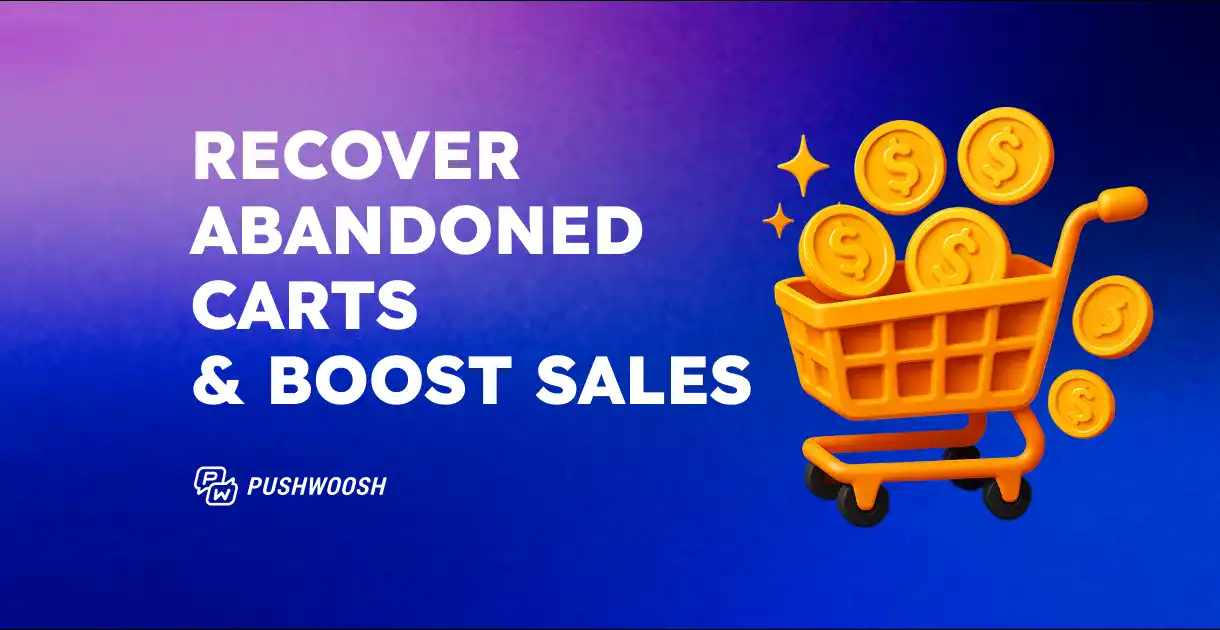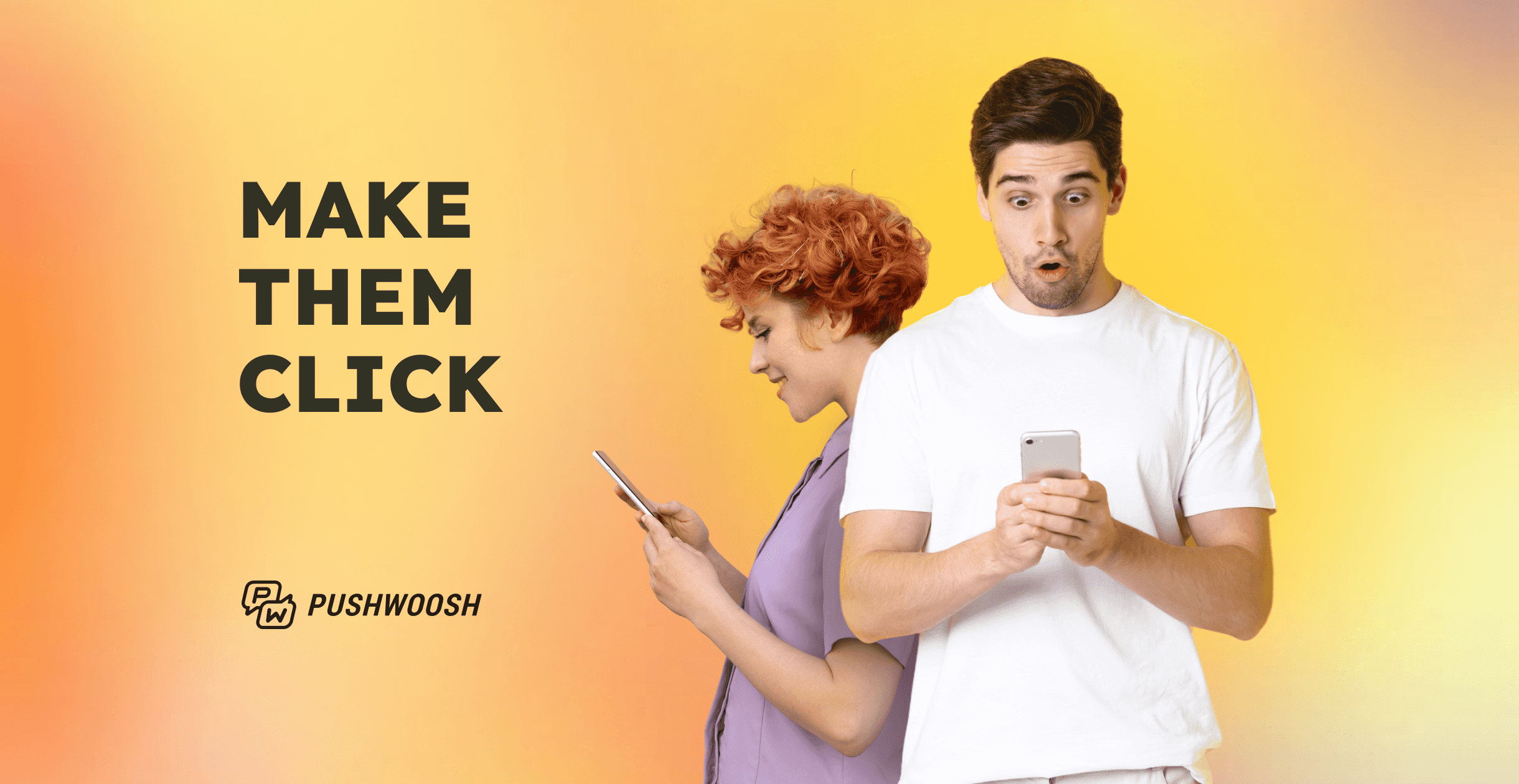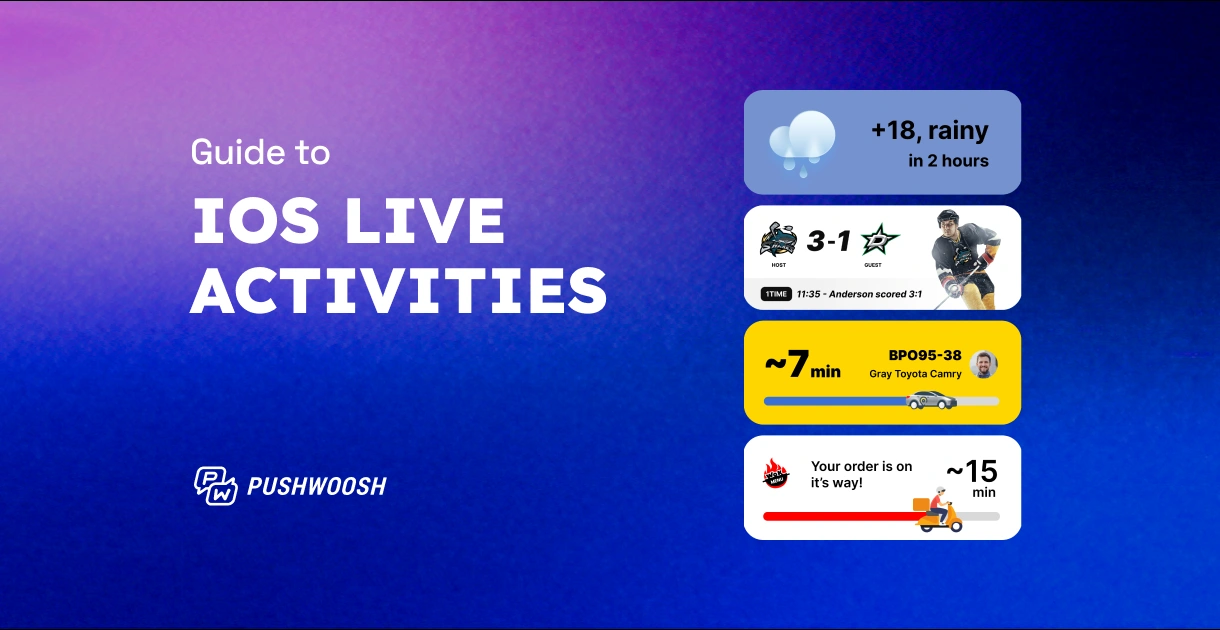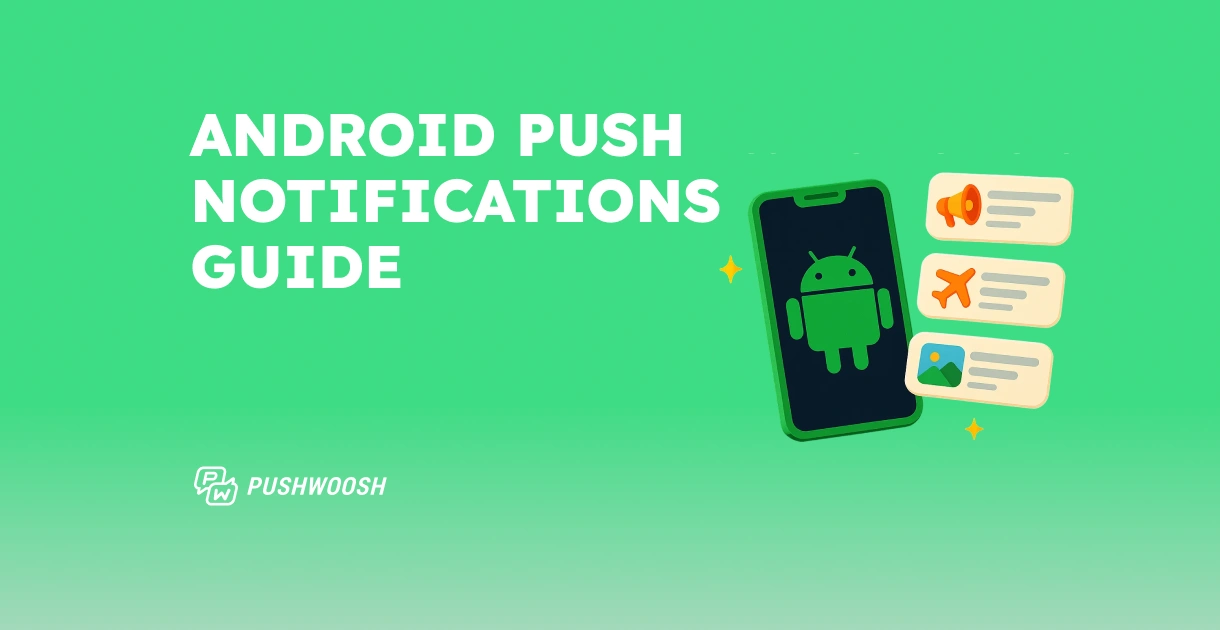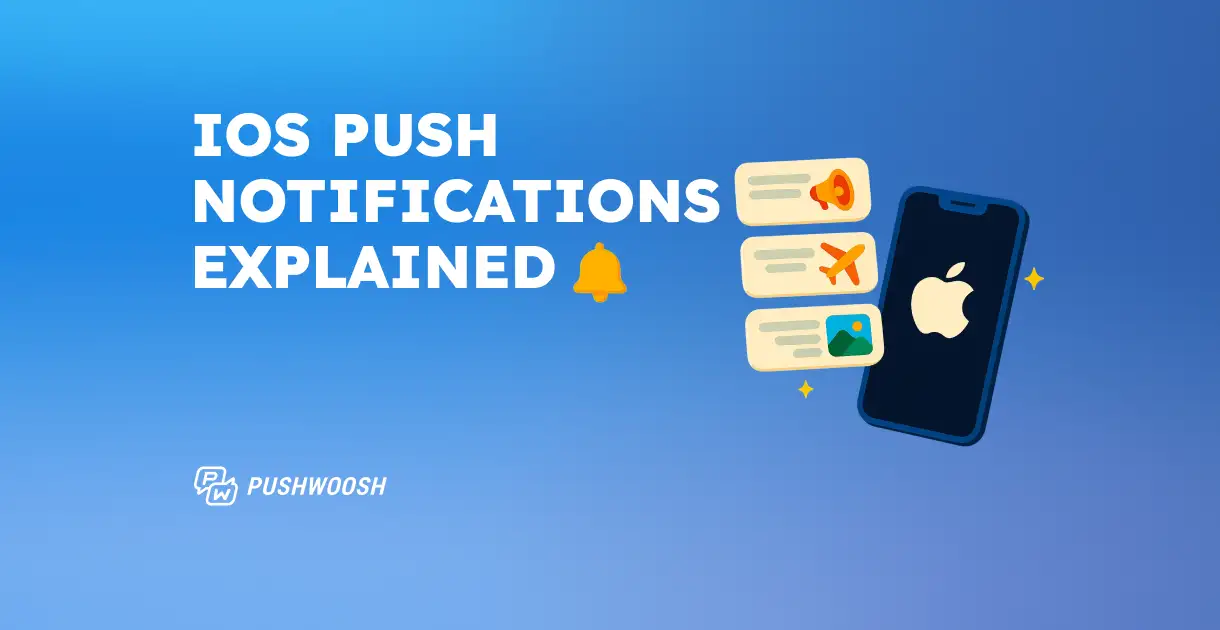How to send abandoned cart notifications: examples & automation guide
Over 70% 🛒are abandoned before checkout!
Over 70% of online shopping carts are abandoned before checkout, making cart abandonment one of the biggest leaks in the e-commerce funnel. And yet, the potential lost sales that can be recovered is enormous.
In this guide, you’ll learn how to recover abandoned carts with abandoned cart notifications — fast, personalized, and automated to re-engage mobile shoppers and recover lost revenue.
P.S. With Pushwoosh, it’s simple to automate abandoned cart campaigns, reduce cart abandonment, and boost sales across multiple channels — from push notifications and abandoned cart emails to SMS reminders and in-app messages.
Why do carts get abandoned?
Before you can recover lost revenue, it’s essential to understand why shoppers abandon their carts. Recognizing these points of friction helps reduce cart abandonment and build an effective abandoned cart recovery strategy.
- Unexpected extra costs
Why it happens: shoppers add items thinking the price is final — then see high shipping fees, taxes, or handling costs at checkout. Be transparent about costs early in the shopping journey.
- Forced account creation
Why it happens: being required to create an account feels like an extra step, especially for first-time visitors. Enable guest checkout or social login options.
- Complicated or time-consuming checkout
Why it happens: too many form fields, unclear progress indicators, or slow page loads discourage buyers from finishing. Simplify checkout to one or two steps to reduce friction.
- Comparing prices or saving for later
Why it happens: some users use the cart as a wishlist or price comparison tool, not an immediate purchase.
Add “Save for later” or “Add to wishlist” options. Provide price alerts, back-in-stock notifications, or discount reminders to re-engage when they’re ready.
- Technical errors or poor mobile experience
Why it happens: slow loading pages, glitches, or poor mobile optimization can interrupt checkout and frustrate users.
- Distractions or loss of intent
Why it happens: sometimes it’s simple — people get interrupted or distracted before they complete checkout. Use gentle reminders (via email, push, or retargeting ads).
Why are push notifications the best way to recover abandoned carts?
Because they engage fast. The Pushwoosh study shows that in e-commerce & retail, push notifications achieve higher CTRs and stronger opt-in rates than many entertainment industries, especially on Android. This means potential buyers actually see and act on them. Immediacy is critical here: a cart reminder push lands directly on the lock screen, prompting mobile users to return and complete their purchase while their high purchase intent is still fresh.
Moreover, push notifications are most effective when they’re part of an omnichannel abandoned cart recovery strategy. If a user isn’t reachable via push or ignores it, you can seamlessly follow up with abandoned cart emails, SMS, WhatsApp, or in-app messages — cross-channel fallback ensures potential customers slip away in the buyer’s journey.
Abandoned cart push notification examples & templates
Looking for ready-to-use abandoned cart notification templates?
Here are examples to inspire your next abandoned cart campaign. Each push message is designed to create urgency, re-engage potential buyers, and help recover lost revenue in your shopping cart.
Simple reminder
Goal: Gently nudge the shopper while their intent is still high. Use 1 hour after cart abandonment.

Urgency & FOMO push
Goal: Suggest complementary or trending items to increase order value.

Free shipping nudge
Goal: Overcome a common friction point — extra costs.

Price drop alert
Goal: Re-engage wish-listers or hesitant shoppers.

Low-stock reminder
Goal: Add urgency with social proof or scarcity.

Back-in-stock push
Goal: Bring users back when an out-of-stock product returns.

Cross-sell reminder
Goal: Suggest complementary or trending items to increase order value.

Loyalty or VIP push
Goal: Reward loyal users with personalized perks.

Seasonal flash sale
Goal: Leverage a holiday or seasonal campaign to reactivate cart abandoners.

Final reminder
Goal: Last attempt before cart expires — urgent but friendly.

💡Pro tip: If you’d like to personalize your abandoned cart reminders with dynamic elements — like product names, user first names, or custom discount codes — and learn how to trigger abandoned cart notifications 👉🏻 we’ll break down exactly how to automate this, step by step.
Before you start: Maximize opt-ins
No abandoned cart campaign can succeed if your audience doesn’t see your messages. Increasing push notification opt-ins ensures more reminders are delivered, more lost revenue is recovered, and fewer shopping carts are forgotten.
If your opt-in rate is below the benchmark, it’s worth a quick fix before launching recovery flows. To secure opt-in, request permissions after a positive in-app action (like signing in or adding a first item to cart) and use a pre-permission screen to explain the benefits (exclusive deals, delivery updates, back-in-stock alerts).
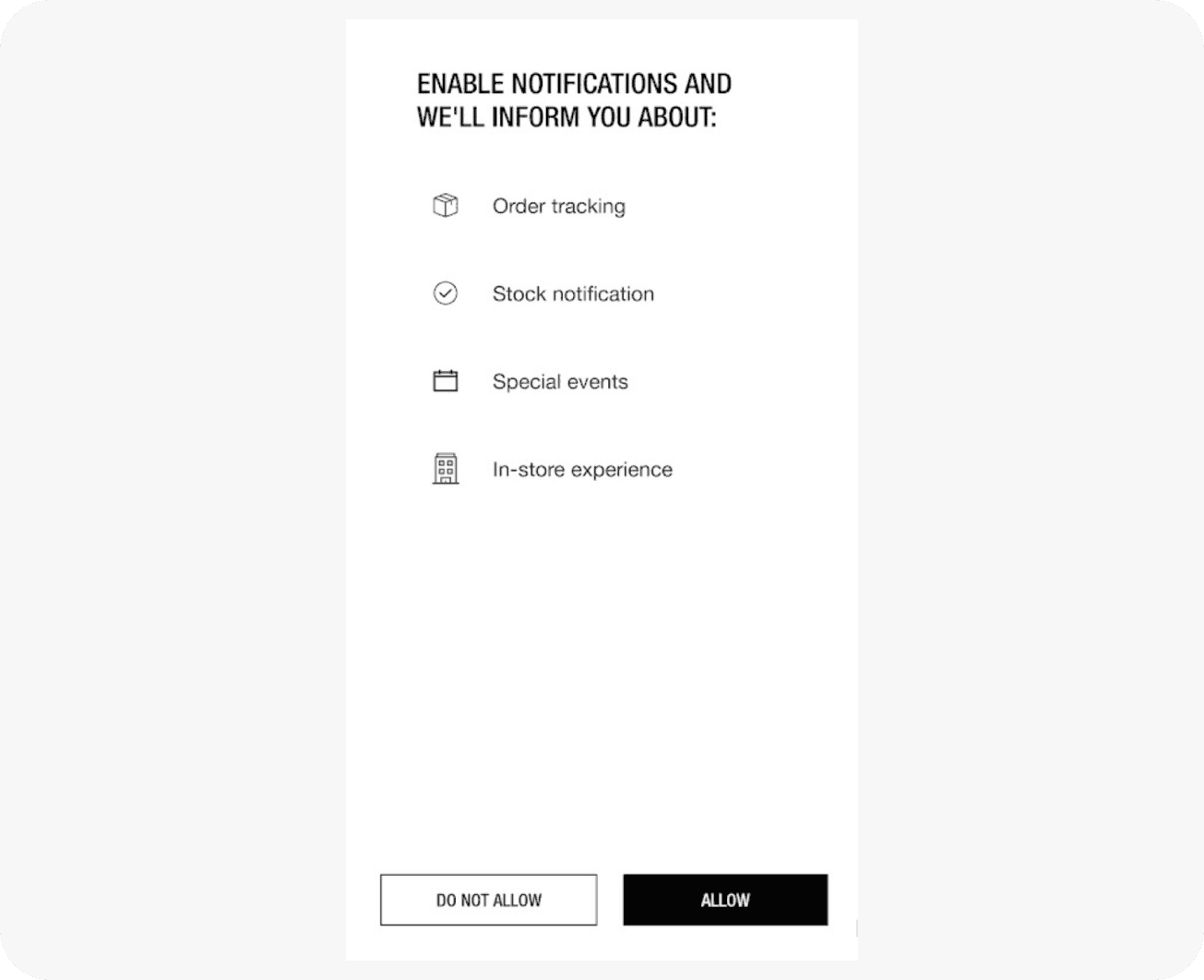
Even a small improvement in your opt-in rate means more abandoned cart notifications delivered — and less lost revenue from shoppers abandoning their carts. To capture more users, ask for permission at the right time — after they’ve taken a positive in-app action such as signing in or adding an item to the cart — and clearly explain the value: exclusive deals, price alerts, or delivery updates.
Step 1. Set event triggers for cart recovery
An abandoned cart recovery campaign starts with the right event trigger:
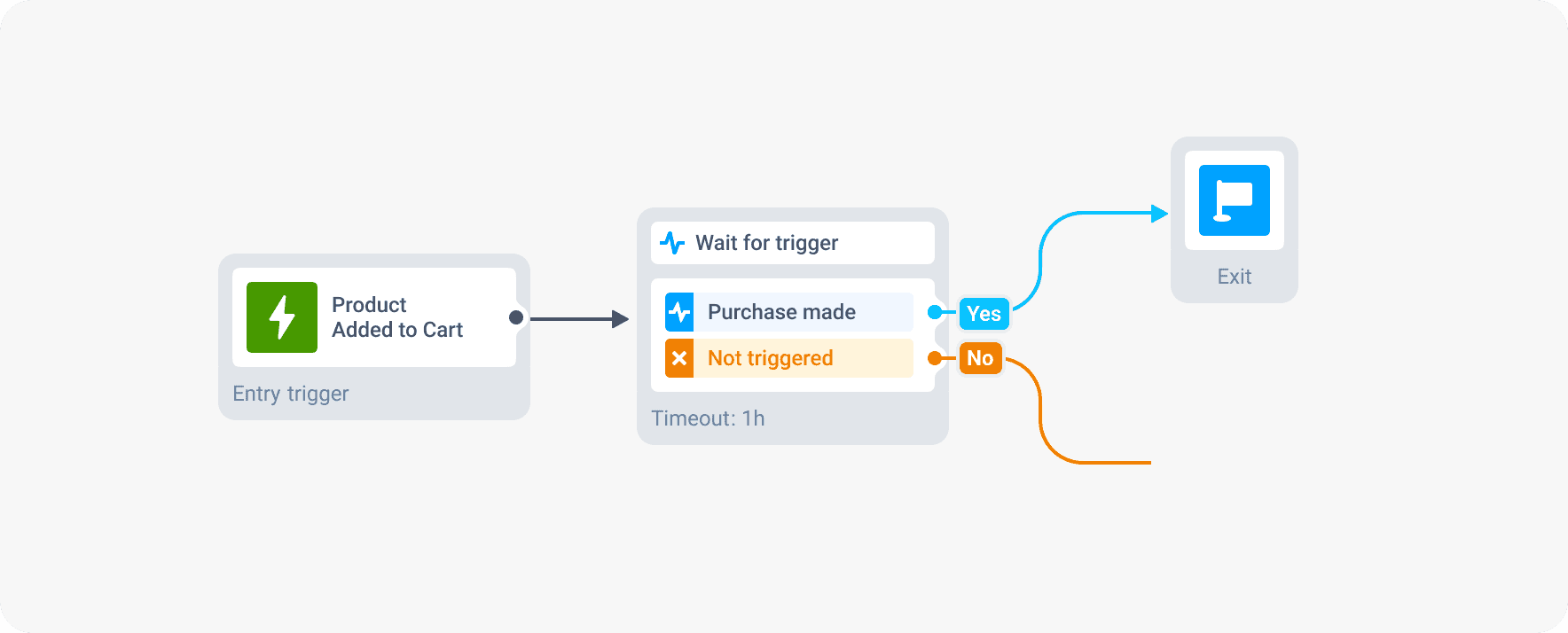
The setup is simple but effective: when a shopper adds items to their shopping cart but doesn’t complete the purchase, your abandoned cart notification sequence should start automatically.
Acting quickly is key, so don’t miss the critical window when purchase intent is still fresh. Delays of more than a few hours significantly reduce the chance of recovery.
The best practice is to send:
- 1st reminder: within 1 hour → a simple reminder while purchase intent is high.
- 2nd reminder: within 24 hours → add urgency or a promo code to capture price-sensitive buyers.
- 3rd reminder: within 3 days → final push, possibly with a promo or alternative suggestion.
Here’s how this automated cart recovery flow can look in Pushwoosh Customer Journey Builder, with event-based triggers and time delays:

Step 2. Separate browse abandonment vs. cart abandonment intent
Not all abandoned carts carry the same intent. Some potential customers genuinely plan to buy but drop off during the checkout process, while others use their cart as a temporary wishlist or a comparison board. Differentiating browse abandonment from true cart abandonment is key to building a high-performing abandoned cart recovery strategy.
Here’s how you can build these segments based on behavior:
High-intent cart abandoners
Target users who have at least one abandoned product in their cart without completing a purchase AND have viewed a checkout page or have a history as repeat customers:
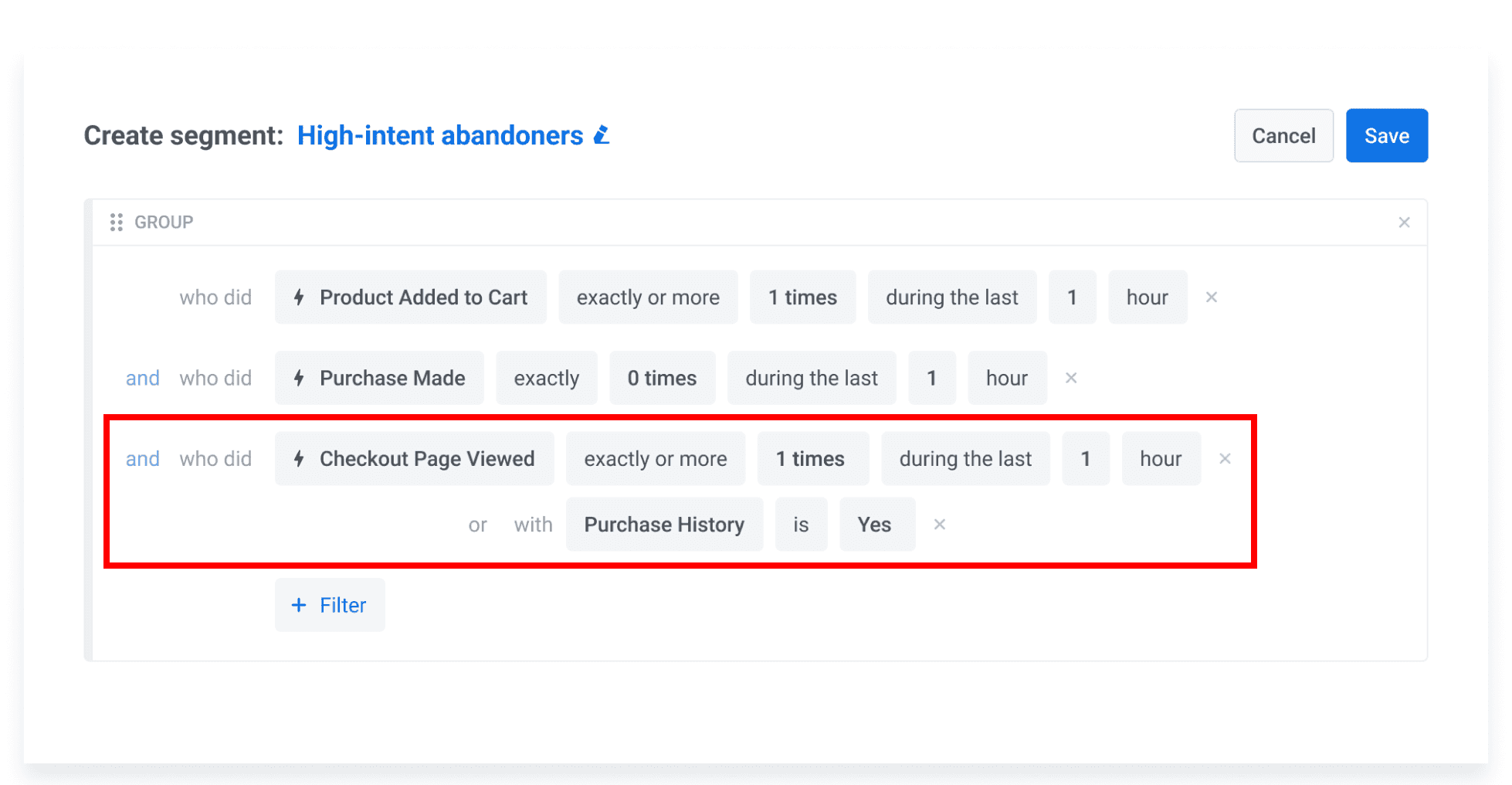
Browse abandoners (or wishlist users)
Target users who have several items in the cart without completing a purchase AND haven’t seen a checkout page or don’t have a purchase history:
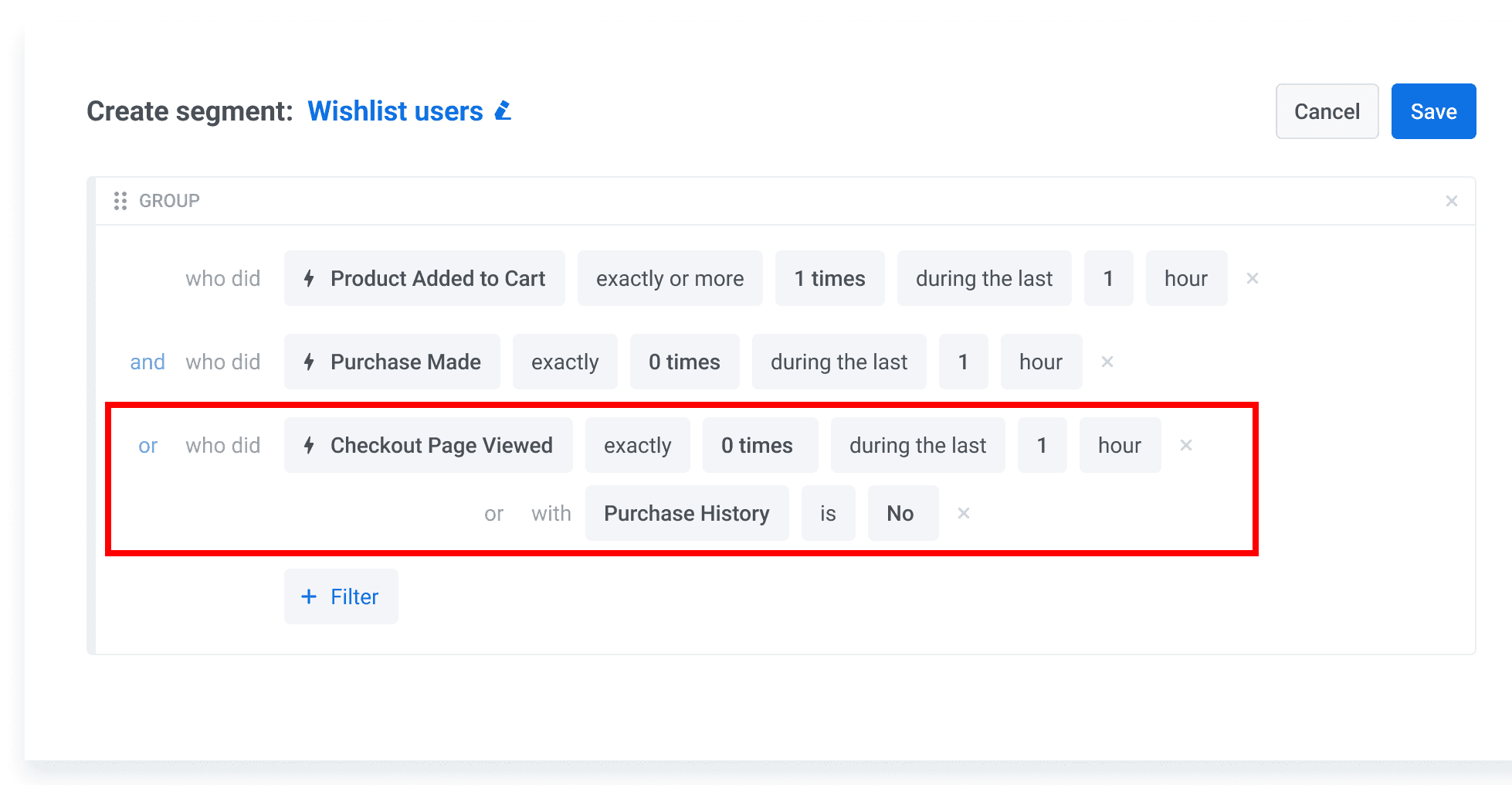
Once segmented, you can run separate automated communication flows (as shown in Step 1) for browse abandonment vs. cart abandonment users, but tailor the message style:
| High-intent cart abandoners | Browse abandoners (wishlist users) |
|---|---|
| Goal: Recover sales quickly during the critical window. | Goal: Keep the interest alive and nurture it toward future purchase. |
| Message style: Stronger urgency triggers like shipping deadlines or limited-time incentives. | Message style: Softer reminders like price-drop alerts, low-stock updates, or prompts to move items into a Favorites list. |
| Message example: “Hurry — your cart expires soon,” or “Complete your order today and get free shipping.” | Message example: “Your favorites are waiting,” or “Good news — your jacket just dropped in price.” |
This way, your abandoned cart push notifications feel relevant and realistic, boosting conversion rates instead of sounding like generic blasts.
Step 3. Master personalized copy of abandoned cart notifications
The content of your abandoned cart push notifications matters as much as the timing. Here’s how you can make your cart recovery reminders more personal (and powerful):
Mention the exact item in your abandoned cart reminder
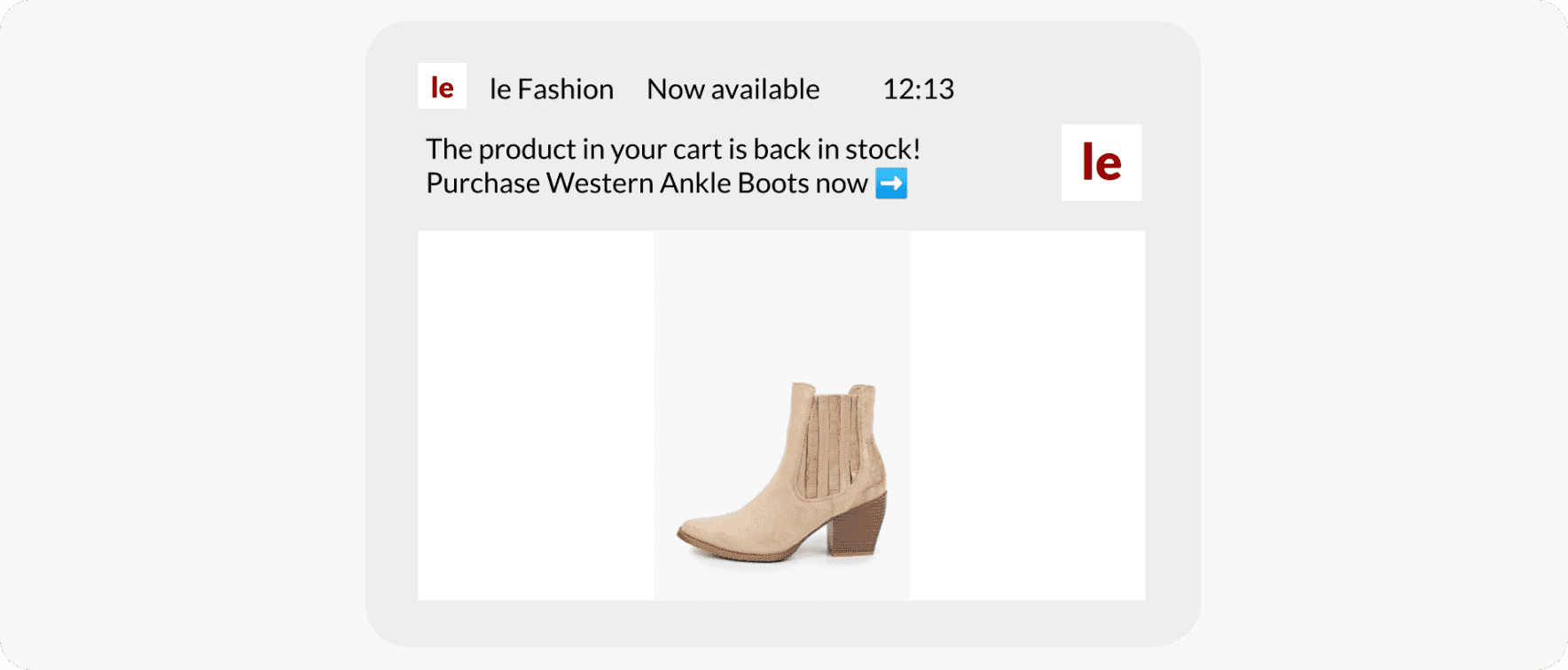
Not sure how to do it? Pushwoosh’s Dynamic content + Rich media features are here to help you automatically insert any data you need — product names, favorite items, sizes, colors, even product images — into each abandoned cart reminder.
Offer a promo code for cart recovery — auto-applied
Motivate price-sensitive buyers with a coupon code automatically applied in their cart, making it effortless to complete the purchase.
For one-time unique discounts, you can use Connected content to insert promo codes generated by your backend service.
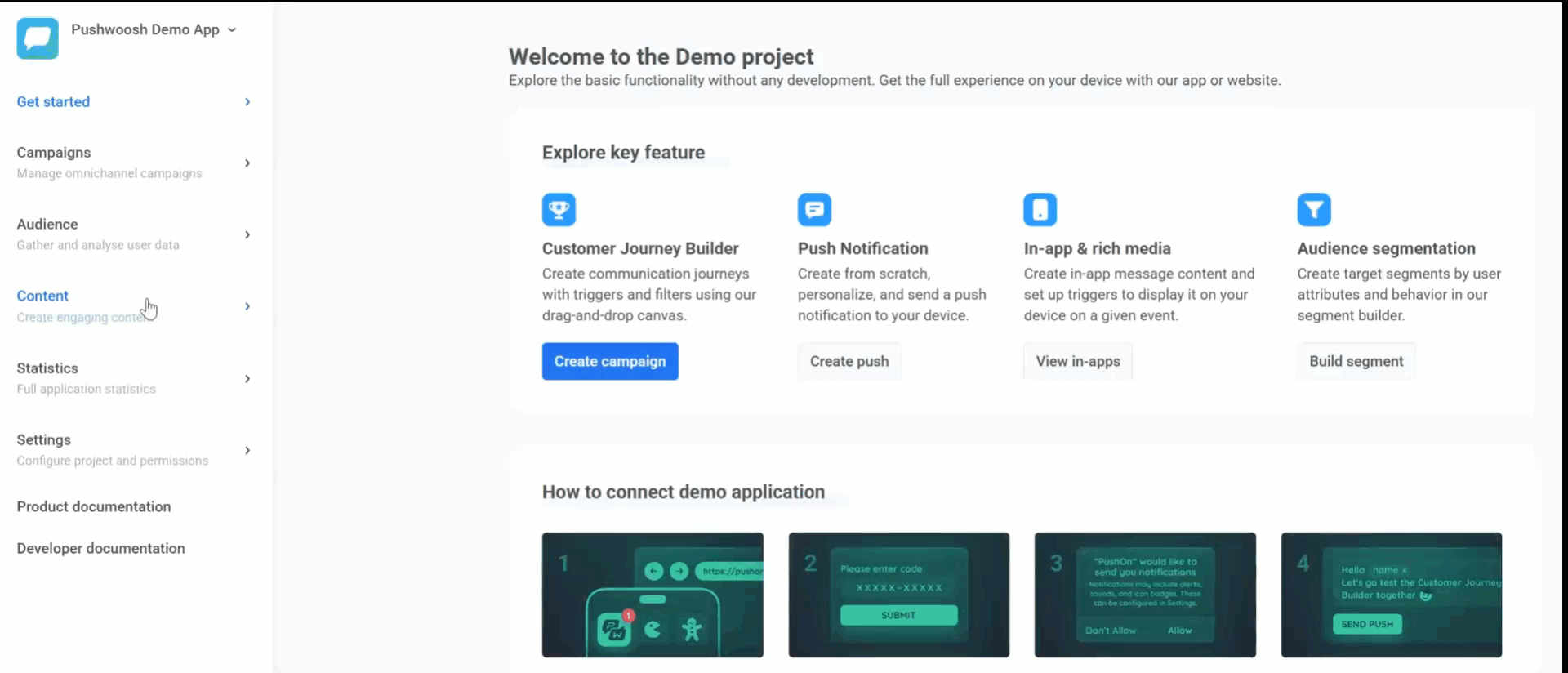
Create urgency with highly relevant alerts
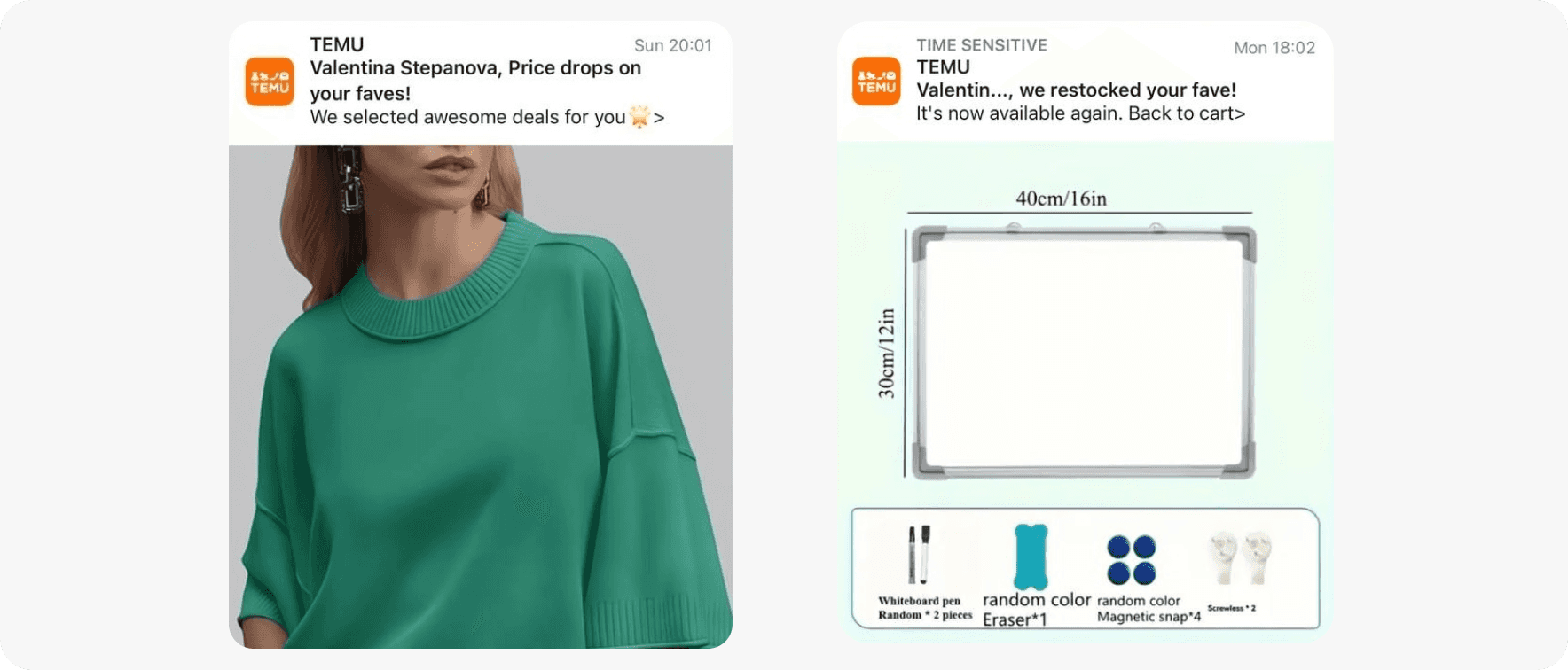
Send messages when the price of an abandoned product changes, stock runs low, or when the item is back in stock.
These events occur outside the app, so this is where API-based entry comes in handy: it allows you to send notifications to users interested in the item at the exact moment the event is triggered in your internal systems.
Step 4. Enable abandoned cart notification сross-сhannel fallback
As we already mentioned, push notifications are only one part of a strong abandoned cart recovery strategy. To maximize conversions, it’s best to combine push with other channels, such as email, in-app messaging, WhatsApp, or SMS.
Here’s what an omnichannel abandoned cart recovery flow can look like in Pushwoosh.
If your push notifications aren’t opened within a set time, the flow automatically continues with a follow-up on another channel. This way, every shopper gets reminded on the channel they’re most likely to engage with, without duplicate messages.
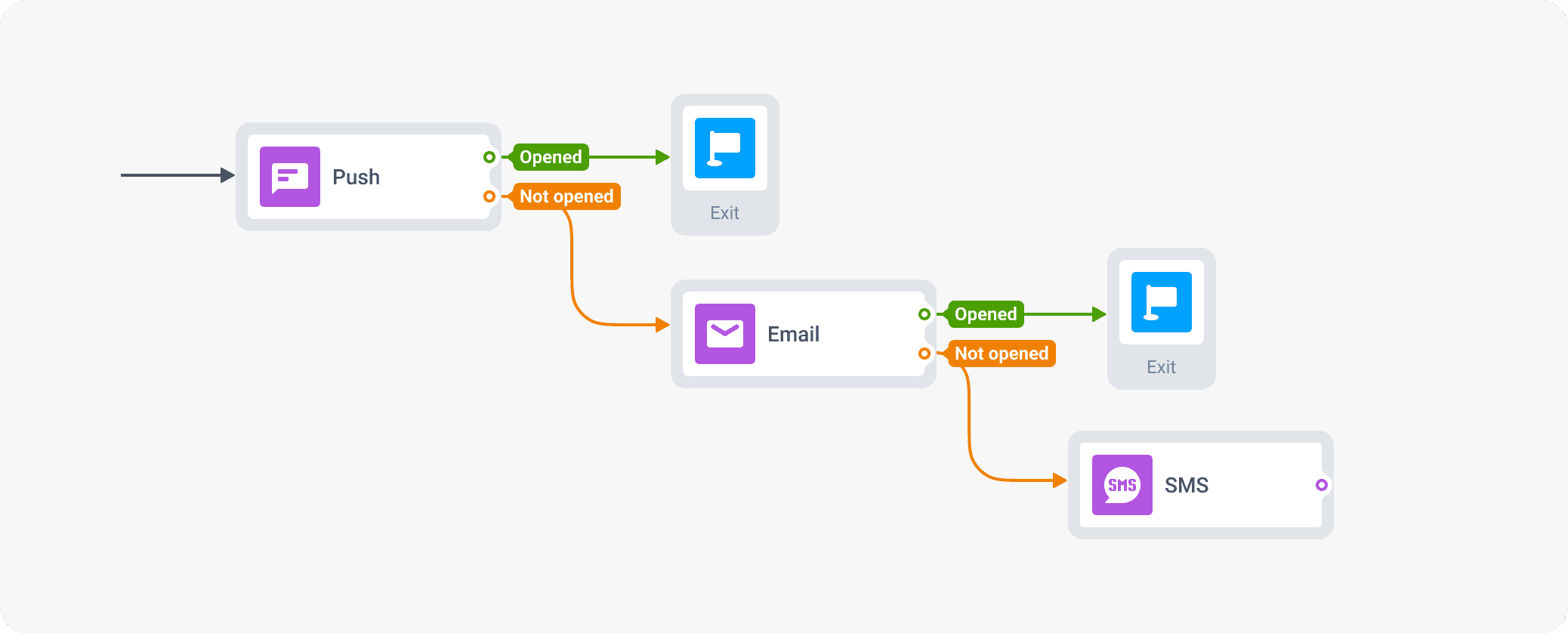
Step 5. Run tests for conversion optimization
Don’t rely solely on best practices — trust your customers. Their clicks will tell you what drives the best conversion rate.
To understand what works best for your specific audience, run A/B/n tests across every element of your abandoned cart recovery flow, for example:
- Message copy: playful vs. urgent
- Offers: free shipping vs. discount code
- Timing: 1 hour vs. 3 hours after cart abandonment
- Channels: push vs. email
- Frequency: two reminders vs. three reminders
Once tests are live, track performance — CTRs, conversions, recovered revenue — and feed those insights back into your campaigns for optimization.
The key to maximizing results is continuous adjustment, not a one-time setup.
Automate your cart recovery with Pushwoosh
Abandoned cart push notifications are one of the most effective ways to recover abandoned carts and increase sales. With Pushwoosh, you can automate your cart recovery flow, personalize messages with customer data, and combine push notifications with email, SMS, and in-app messages for a complete abandoned cart recovery solution.
Start turning abandoned carts into completed purchases today — and watch your lost revenue become more sales.

